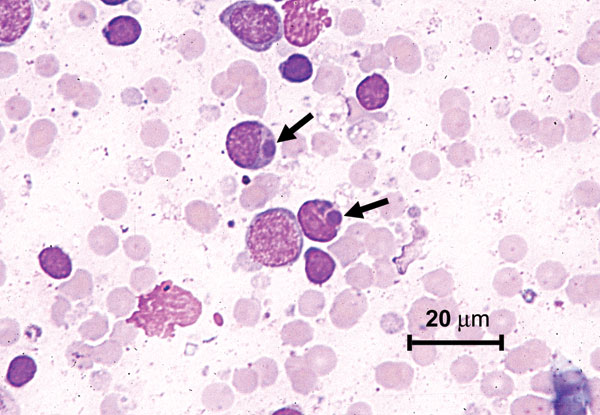Volume 8, Number 12—December 2002
Dispatch
Naturally Occurring Ehrlichia chaffeensis Infection in Two Prosimian Primate Species: Ring-tailed Lemurs (Lemur catta) and Ruffed Lemurs (Varecia variegata)
Figure

Figure. Photomicrograph of a lymphocyte from a lymph node aspirate containing Ehrlichia morula (arrow). Stain is with Wright’s-Giemsa.
1 Approximately 1 year after the outbreak in this report, E. chaffeensis was amplified by PCR from an ill lemur in Virginia that was unrelated to the Duke colony. The clinical and hematologic manifestations were consistent with those seen in lemurs in this report.
Page created: July 19, 2010
Page updated: July 19, 2010
Page reviewed: July 19, 2010
The conclusions, findings, and opinions expressed by authors contributing to this journal do not necessarily reflect the official position of the U.S. Department of Health and Human Services, the Public Health Service, the Centers for Disease Control and Prevention, or the authors' affiliated institutions. Use of trade names is for identification only and does not imply endorsement by any of the groups named above.